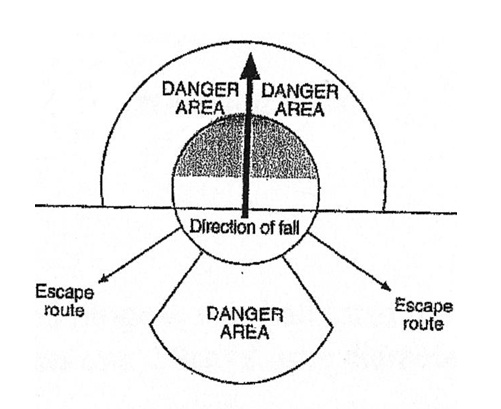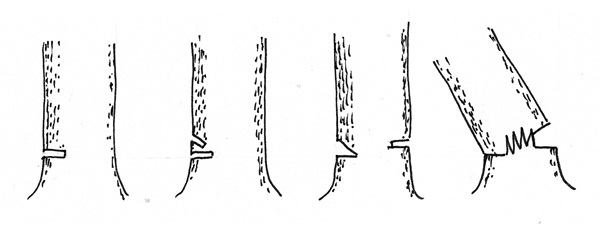Categories
Calendars
Guides
Reviews
Archive
Gallery
Articles
Ask Our Gardening Expert
Felling a Tree
Trees more than 5m in height are best removed by an arborist who has the knowledge, the correct tools for the work and will be insured against damage. Check with your local planning authority that the tree is not subject to a preservation order and that if it is on a boundary, that it legally belongs to you. Some people have concerns about trees removed from the natural environment but you must remember that gardens are by their nature, artificial environments and that there are very good reasons to remove trees. Fortunately, amenity trees in the landscape can be replaced.
Plan the direction of fall and make sure there is a clear escape route in the direction away from the fall. Check the route and remove any obstructions. Anticipate any damage that may occur to plants and trees in the fall zone. It is a good idea to have some assistance, even a watcher from a safe distance who can warn of any possible danger. Cutting down a tree can be an intense procedure and amateurs may not always be aware of what is happening when they are intent on a difficult job.
Planning the direction of fall
Note the danger area immediately behind the tree, where the trunk can sometimes kick back.
Stages on the felling of a tree
Make a horizontal cut no more than a third of the thickness of the trunk on the side of direction of fall. Make second, diagonal, cut above to meet with the first cut so that a ‘wedge’ with and angle of 20-30 degrees can be removed. The third cut should be made a little higher than the first. The tree then be pushed over or gravity can do the rest. The uncut wood forms a ‘hinge’ which controls the direction of fall. Large trees can be helped by tying a rope around the trunk, always assuring that the rope is longer than the height of the tree.
It is always better to remove the stump. If left to rot, it could attract fungus which could spread to other trees. Dig around large roots with a spade or grubber and sever them with an axe. A large stump can be removed with a hired grinder or can be done by a contractor. Often, with smaller trees, the trunk can be cut some way above the base of the tree to act as a lever. A winch or rope can be fixed below the cut to break the stump out of the ground. An alternative is to cut the stump level with the ground and treat it with a proprietary stump killer.
Trees can be felled at any time of year. It is a skilled job and potentially dangerous and must be undertaken with much caution. 
Choose a calm day, or at least a day when air movement is light. Wind can easily alter the direction of fall. Trees are taken down in stages. First, large branches may be removed to reduce the weight and to gain access to the trunk. A small tree can be cut down with a hand held bow saw. Chainsaws is preferred for larger trees but they are potentially dangerous and need to be handled correctly.
